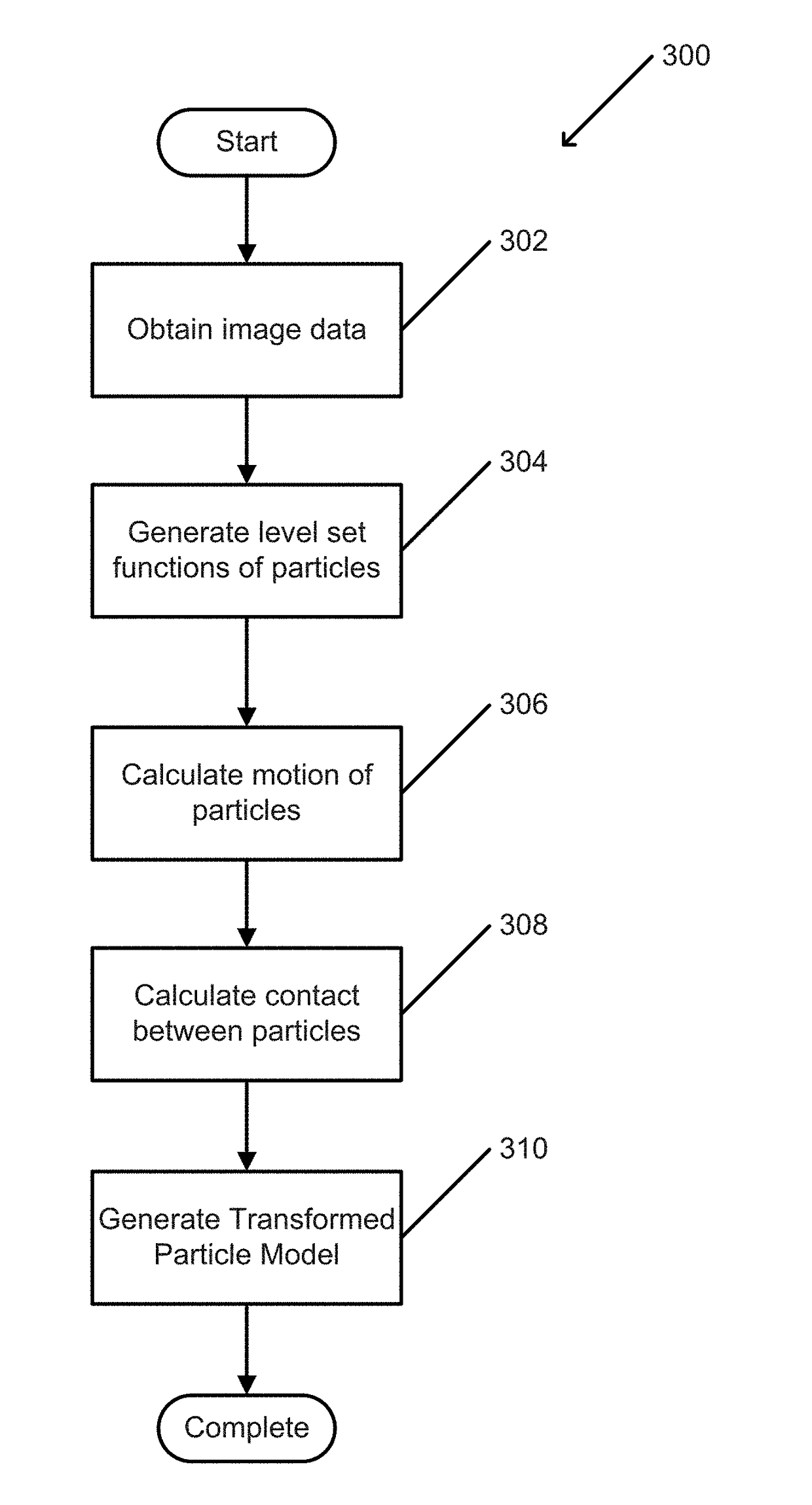Systems and Methods for Level Set Discrete Element Method Particle Simulation
a discrete element and particle simulation technology, applied in the field of particle system simulation, can solve the problems of affecting the macroscopic response, the complexity of contact detection algorithms available for these geometrical entities, and the limited ability of current techniques such as clustering and polyhedral based methods to capture particle morphology
- Summary
- Abstract
- Description
- Claims
- Application Information
AI Technical Summary
Benefits of technology
Problems solved by technology
Method used
Image
Examples
Embodiment Construction
[0042]Turning now to the drawings, systems and methods for level set discrete element method particle simulation in accordance with various embodiments of the invention are illustrated.
[0043]In many embodiments, a level set (LS) discrete element method (DEM, together LS-DEM) process is utilized to analyze particulate systems. LS-DEM processes are particularly well suited for modeling any shape including (but not limited to) convex and / or nonconvex shapes. LS-DEM utilizes level set functions to model particles with arbitrary shape, unlike traditional DEM approaches which typically simplify particle shapes using spheres (or discs), ellipsoids, or polyhedral functions. A level set function can include a function whose value is a signed distance from a point. In a variety of embodiments, these functions are scalar valued. In some embodiments, LS functions can be implemented as a grid of points, where each point has a value corresponding to its distance from the edge of a grain particle....
PUM
 Login to View More
Login to View More Abstract
Description
Claims
Application Information
 Login to View More
Login to View More - R&D
- Intellectual Property
- Life Sciences
- Materials
- Tech Scout
- Unparalleled Data Quality
- Higher Quality Content
- 60% Fewer Hallucinations
Browse by: Latest US Patents, China's latest patents, Technical Efficacy Thesaurus, Application Domain, Technology Topic, Popular Technical Reports.
© 2025 PatSnap. All rights reserved.Legal|Privacy policy|Modern Slavery Act Transparency Statement|Sitemap|About US| Contact US: help@patsnap.com

